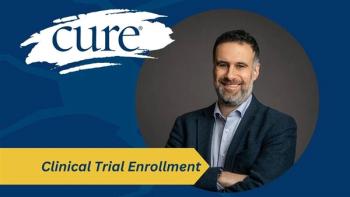
Wait-and-Watch May Be a Strategy for Patients With Rectal Cancer
The results of a recent study showed that a wait-and-watch approach may be appropriate for patients with rectal cancer.
For patients with rectal cancer, a wait-and-watch approach may soon be a potential treatment strategy, according to the results of large observational study that will be presented at the 2017 Gastrointestinal Cancers Symposium in San Francisco, CA.
After a median follow-up of 2.6 years, 25 percent of patients underwent delayed surgery due to a diagnosis of regrowth of their cancer. Distant metastases occurred in 7 percent of patients. The three-year survival rate was 91 percent among all patients, and 87 percent among patients who experienced local cancer recurrence.
“Despite seeing excellent outcomes in our study, we know the decision to undergo surgery is personal for every patient,” said Maxime van der Valk, M.D., one of the study coordinators of the International Watch and Wait Database Consortium (IWWD) and Leiden University Medical Center in Leiden, Netherlands. “When faced with the risk of permanent colostomy, some patients will prefer to avoid surgery, while others won’t want to deal with the uncertainty of their cancer potentially recurring.”
In August 2016, the database included 775 patients from 11 countries and 35 participating institutions. According to the study authors, this represents the largest series of patients with rectal cancer for whom surgery was omitted after treatment with chemotherapy and radiation therapy. Ninety percent of all patients were included in the study because of a clinical complete response (679 patients). All other reasons for a watch-and-wait approach were excluded from the present analyses.
The imaging modalities used to evaluate patients’ responses following induction therapy were variable. In 90 percent of cases, induction treatment consisted of chemoradiotherapy.
The median follow-up time was 2.6 years (range 0-24 years), and local regrowth occurred in 25 percent of all patients (167 patients). Eighty-four percent of local regrowth cases occurred in the first two years of follow-up.
At the time of follow-up, 25 percent of patients had undergone delayed surgery after a diagnosis of a cancer regrowth. Distant metastases occurred in 7 percent of patients. The three-year survival rate was 91 percent among all patients, and 87 percent for patients who experienced local recurrence. These findings are consistent with historic data from patients with rectal cancer who undergo surgery.
Outcomes for patients with rectal cancer have generally improved over the last decade, with improvements in surgical techniques, the introduction of perioperative chemotherapy and radiotherapy, and improved diagnostics, says van der Valk.
However, she says, surgery in this setting still bears considerable consequences, including colostomy, sexual and urinary dysfunction, and surgical complications.
The IWWD Consortium was established in 2014 by clinical experts in the field. This international collaborative platform aims to provide evidence on safety, risks, and benefits for patients.
According to the study abstract, the current data demonstrate major, worldwide differences in the type and dose of induction therapy, as well as imaging strategies used to assess response after chemoradiotherapy.
At the present time, watch-and-wait is not a standard of care for patients with rectal cancer in any country. It is currently estimated that this approach is used in the treatment of fewer than 5 percent of all patients. In most countries, patients with stage 2-3 rectal cancer typically receive chemotherapy and/or radiation therapy before moving on to surgery. Approximately 20 percent of patients see their tumors disappear completely after chemotherapy and/or radiation. However, it is not standard to re-asses or “restage” the tumor to see if surgery is still required.
Further data collection on this watch-and-wait strategy for patients with rectal cancer is warranted in order to expand knowledge on the safety of omitting surgery.
“Some people with rectal cancer undergo surgery after chemoradiation therapy, even though it may not be necessary,” said van der Valk. “From the data we have now, it seems that watch-and-wait may be safe in selected patients with rectal cancer, but it is too soon to say whether this approach should be routinely offered.”





